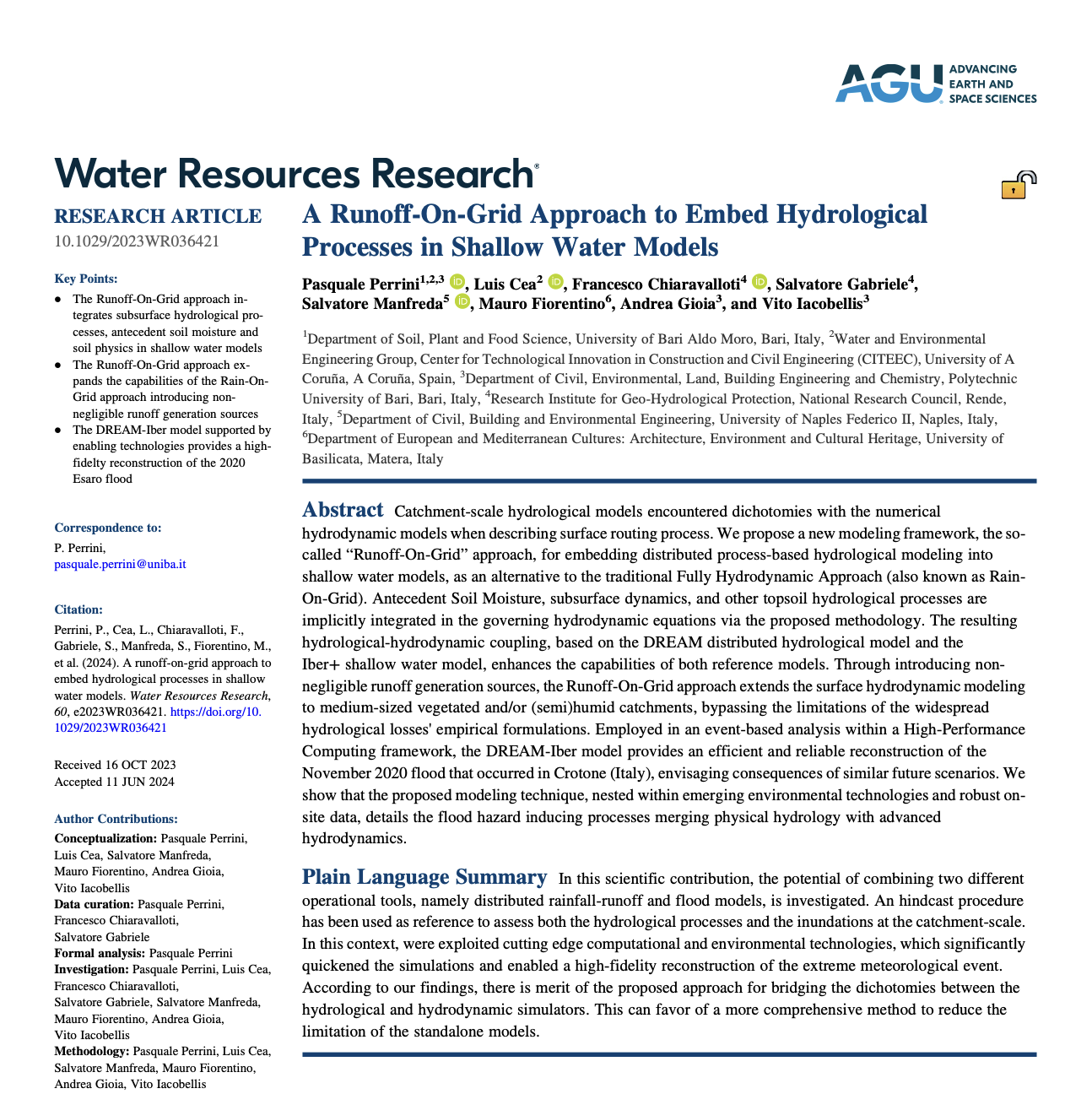Catchment-scale hydrological models encountered dichotomies with the numerical hydrodynamic models when describing surface routing process. We propose a new modeling framework, the so-called “Runoff-On-Grid” approach, for embedding distributed process-based hydrological modeling into shallow water models, as an alternative to the traditional Fully Hydrodynamic Approach (also known as Rain-On-Grid). Antecedent Soil Moisture, subsurface dynamics, and other topsoil hydrological processes are implicitly integrated in the governing hydrodynamic equations via the proposed methodology. The resulting hydrological-hydrodynamic coupling, based on the DREAM distributed hydrological model and the Iber+ shallow water model, enhances the capabilities of both reference models. Through introducing non-negligible runoff generation sources, the Runoff-On-Grid approach extends the surface hydrodynamic modeling to medium-sized vegetated and/or (semi)humid catchments, bypassing the limitations of the widespread hydrological losses’ empirical formulations. Employed in an event-based analysis within a High-Performance Computing framework, the DREAM-Iber model provides an efficient and reliable reconstruction of the November 2020 flood that occurred in Crotone (Italy), envisaging consequences of similar future scenarios. We show that the proposed modeling technique, nested within emerging environmental technologies and robust on-site data, details the flood hazard inducing processes merging physical hydrology with advanced hydrodynamics.
How to cite: Perrini, P. , L. Cea, F. Chiaravalloti, S. Gabriele, S. Manfreda, M. Fiorentino, A. Gioia, V. Iacobellis, A Runoff-On-Grid Approach to Embed Hydrological Processes in Shallow Water Models, Water Resources Research, https://doi.org/10.1029/2023WR036421, 2024. [Link]
